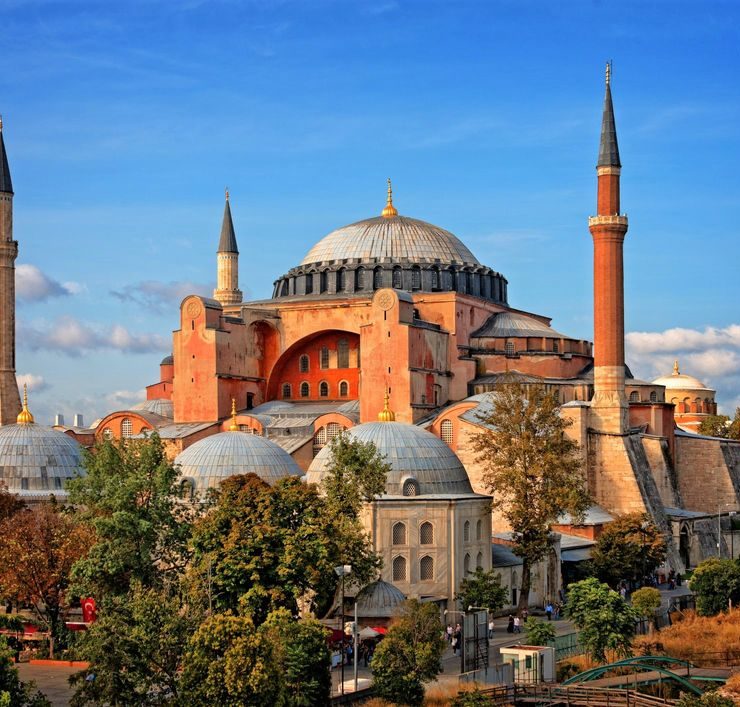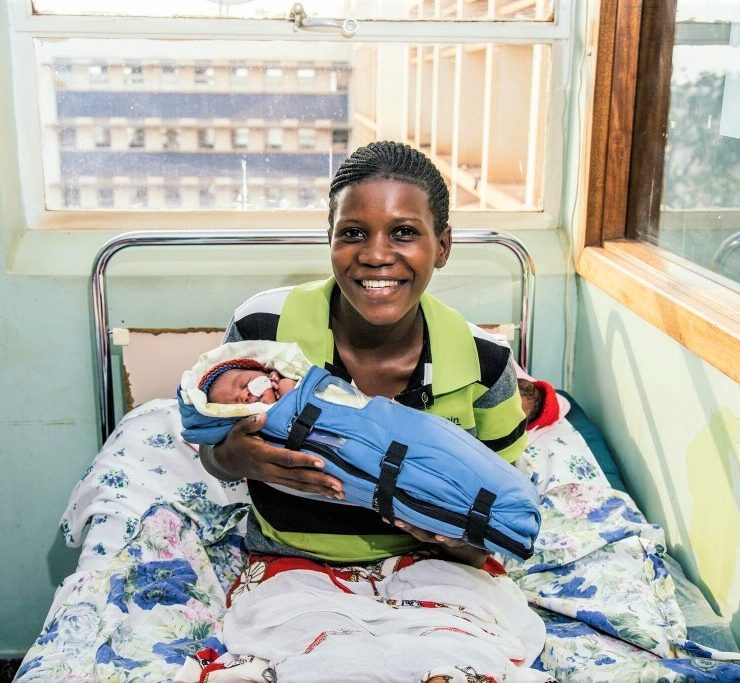Countless, priceless, and they leave us speechless. The world heritage sites around the world are truly extraordinary and should be seen or experienced at least once in a traveler’s lifetime. Yes, they’re amazing, jaw-dropping and every other word we can think of to praise such places, yet these words aren’t enough to preserve these sites, which are slowly dying. It looks like people have forgotten that these wonders — from natural to man-made — won’t last forever without the people who’ll give them utmost importance and care.
Here are the 46 priceless world heritage sites that are quietly and slowly facing extinction:
1. Cultural Landscape and Archaeological Remains of the Bamiyan Valley, Afghanistan
Why it’s special: It contains outstanding Buddha statues which represent the Gandharan School making it a crucial centre for architectural, artistic and cultural remains of Buddhism.
Why it’s in danger: It has continually suffered from several destructions leaving most of its statues destroyed because its ownership documents were devastated in a civil war and current maintenance mainly depends on international community.
2. Minaret and Archaeological Remains of Jam, Afghanistan
Why it’s special: It is a key representation of the rich and well-preserved culture, art, decorations, monuments and state-of-the-art architectural works in the region of Central Asia.
Why it’s in danger: Since its establishment approximately 800 years ago, the building has never been renovated, leaving it in a bad state.
3. Belize Barrier Reef Reserve System, Belize
Why it’s special: It is a unique natural phenomenon containing one of the biggest barrier reef in the entire northern hemisphere. Its seven sites are homes to some of the species that are greatly endangered such as American marine crocodile, manatees and marine turtles.
Why it’s in danger: The resources within the reefs went unused after the failure of the Mayan civilization. Pirates then started hiding in these reefs making them a dangerous place to go. Ever since that time, the caves have never been maintained or renovated.
4. City of Potosi, Bolivia
Why it’s special: It was the world’s largest source of silver ore and a sophisticated hub for industrial activities. The area contains artificial lakes supplying several channels of water. It hosts Cerro Rico’s monuments.
Why it’s in danger: Due to the numerous silver ore extractions that took place during the pre-historic period, the area has been largely degraded and little efforts have been made to rehabilitate it.
5. Manovo-Gounda St Floris National Park, Central African Republic
Why it’s special: It’s the largest national park in Central Africa containing numerous amazing savannahs that are home to several endangered flora and fauna species such as cheetahs, wild-dogs, black rhinoceroses, buffalo, and waterfowls, among others.
Why it’s in danger: The park is exposed to several poaching threats of its species and grazing from nomad pastoralists. There are also no clear management structures for the park
6. Humberstone and Santa Saltpeter Works, Chile
Why it’s special: It was once the world’s largest source of saltpeter that produced sodium nitrate fertilizer which revolutionized agriculture in Pampa, Chile. It has remained an industrial heritage for numerous saltpeter works since 1872.
Why it’s in danger: The site was looted and demolished in late 1960s and no proper maintenance works have ever been done since then. Several industrial structures in the works have undergone extensive erosion leaving them in bad state and no efforts are being made to conserve them
7. Los Katios National Park, Colombia
Why it’s special: It contains a wide range of forests, floodplains and low hills. Moreover, it is home to several endangered animal and plant species. This is the park where the fastest-flowing river in the world, Atrato River, is located.
Why it’s in danger: The threatened species within the park are largely exposed to poaching risks and more people are also settling in some parts of this park threatening it even more.
8. Comoe National Park, Ivory Coast
Why it’s special: It contains a wide variety of rare plant and animal species. It is renowned for its ecological integrity and the species found in it are rare to find anywhere else in the world
Why it’s in danger: It is under the threat of increased and unrestrained poaching which has decreased its animal and plant population; civil unrest; poor management structures; agricultural activities and human settlements.
9. Mount Nimba Strict Nature Reserve, Guinea and Ivory Coast
Why it’s special: It is an outstanding reserve dominated by approximately 50 springs, numerous mountains with dense forests covering their slopes. It contains a wide variety of threatened plant and animal species. It is a great geographical location with outstanding climatic conditions.
Why it’s in danger: Most of its plant and animal species are under death threats. There are also several mining activities going on in the surrounding areas posing risks to the reserve. It is also threatened by increased adjacent human populations which may lead to destruction of the reserve for agricultural use.
10. Garamba National Park, Democratic Republic of the Congo
Why it’s special: It contains unique woodlands, grasslands and savannahs full of river banks, forests and valleys. It contains some of the largest mammals such as white rhinoceros, giraffe, elephant and hippopotamus. It is also the home to some of the rarest elephant species in Africa.
Why it’s in danger: It is under poaching threats from the local communities due to its three great hunting grounds
11. Kahuzi-Biega National Park, Democratic Republic of Congo
Why it’s special: Being a tropical forest with two remarkable volcanoes has made it a globally recognized park. It contains a wide variety of plants and animals including the eastern low-lying gorillas.
Why it’s in danger: Population disputes which came up during the 1975 extension plan that was announced by the Congolese government. Political instability within the region, oil explorations and uncontrolled poaching are also great threats to the park.
12. Okapi Wildlife Reserve, Democratic Republic of the Congo
Why it’s special: It contains endangered primate and bird species and some of the historic sites in Africa including Epulu and Ituri rivers.
Why it’s in danger: Land encroachment by human population, artisanal mineral exploration and uncontrolled poaching. The management plan for the reserve has also not been approved yet.
13. Salonga National Park, Democratic Republic of the Congo
Why it’s special: It is Africa’s biggest tropical forest reserve. It is home for numerous endangered species including dwarf chimpanzee, forest elephant, Congo peacock, etc.
Why it’s in danger: It does not have a management plan therefore it can be easily encroached by human population. It is also threated by poaching, deforestation, honey harvesting, and lack of sufficient funds to manage the park.
14. Virunga National Park, Democratic Republic of the Congo
Why it’s special: It contains eight outstanding series of volcanoes in Africa, two of them being the most active volcanoes found in Africa. It is also home for numerous plants and animals.
Why it’s in danger: It has several management problems such as lack of sufficient surveillance systems. It is also exposed to risks such as poaching, deforestation and human encroachment.
15. Abu Mena, Egypt
Why it’s special: It was built over the tomb of Alexandria’s martyr, Mena. Mena, who was a soldier declined to kill any Christian after his army winning the fight. It contains public buildings, a church, monasteries, workshops, houses and basilicas which hosted Christian pilgrims.
Why it’s in danger: Very little renovations have been done on this structure and it is slowly losing its significance and popularity.
16. Simien National Park, Ethiopia
Why it’s special: It’s among the most beautiful natural landscapes globally. It comprises pointed mountain peaks, sharp cliffs and deep valleys. It is also home to some of the rarest animal species.
Why it’s in danger: The park is under threats such as human settlement, soil erosion, agricultural activities, and lack of effective management strategies.
17. Bagrati Cathedral and Gelati Monastery, Georgia
Why it’s special: It contains several unique wall paintings and mosaics. It is a representation of ancient arts, metal works and architecture in Georgia.
Why it’s in danger: There are no structured management and protection systems put in place to conserve this structure.
18. Historical Monuments of Mtskheta, Georgia
Why it’s special: It is a representation of the rich ancient religious, cultural, artistic and architectural works in the Caucasus region. It has numerous outstanding structures that represent the origin of architecture and culture.
Why it’s in danger: Most of the original structures were destroyed by Tamurlaine and despite the reconstruction that was done in 1830s, not much has been done since then.
19. Rio Platano Biosphere Reserve, Honduras
Why it’s special: It is among the few tropical rainforests in Central America hosting a wide variety of plants and animals. It is continuing to promote traditional life of its habitats and it is a center of archeological importance.
Why it’s in danger: It is under the threats of deforestation, human encroachment and uncontrolled farming activities.
20. Tropical Rainforest Heritage of Sumatra, Indonesia
Why it’s special: It has a large number of unique plant and animal species. The site has three national parks namely Kerinci Seblat, Gunung Leuser and Bukit Barisan Selatan. It also hosts Indonesia’s highest volcano plus several other breathtaking features and sceneries such as waterfalls, fumaroles, steep rocky backdrops, etc.
Why it’s in danger: agricultural encroachment, road construction plans, poaching, deforestation and illegal logging.
21. Ashur (Qal’at Sherqat), Iraq
Why it’s special: It is located between two areas of irrigation and rain-fed agriculture. It has great ecological conditions which attracted lots of economic, religious, cultural, social and political activities.
Why it’s in danger: There are no conservation and management plans in place to protect this ancient city. Majority of the structures are continuously being destroyed.
22. Samarra Archaeological City, Iraq
Why it’s special: It was a major Islamic empire which was in leadership for a century. It has maintained its original plan, art, mosaics, wall paintings, carvings and architecture. It preserves the largest Islamic palaces and mosques.
Why it’s in danger: Its original use has been changed and it is now being used as a ground for military operations. There are no laws to manage and conserve the city. Most parts are now being cultivated by humans
23. Old City of Jerusalem and its Walls, Israel
Why it’s special: It has significance religious implication to Christianity, Judaism and Islam. It contains hundreds of monuments with great artistic works and architectural structures. It also hosts Christ’s tomb.
Why it’s in danger: the continuous conflicts among different religions are demeaning the city and its walls. Some of the structures have also been destroyed due to conflicts and improper maintenance plans.
24. Rainforests of the Atsinanana, Madagascar
Why it’s special: The island consists of six national parks which play a crucial role in the plans to maintain the outstanding biodiversity of Madagascar out of the geological activities and history.
Why it’s in danger: increased agricultural encroachments, illegal logging, poaching, gemstone mining and other resource exploitation
25. Timbuktu, Mali
Why it’s special: It was the center for the spread of Islam in Africa. It hosts the prominent Koranic Sankore University and several other madrasas. It is home to three great mosques namely Sankore, Djingareyber and Sidi Yahia, plus sixteen catacombs.
Why it’s in danger: desertification and key changes to traditional architecture
26. Tomb of Askia, Mali
Why it’s special: It is a symbol of greatness, riches and power of the empire. It is linked to original trans-Saharan trade and it contains a unique pyramidal tower, white stone square, necropolis and two flat-roofed mosques. It is also a symbol of unique ancient architectural buildings.
Why it’s in danger: continuous renovations have slightly altered its original structure but major management plans have been put in place
27. Air and Tenere Natural Reserves, Niger
Why it’s special: It’s the largest protected area in Africa. It comprises of a series of mountains of Air and Tenere desert. The combination makes these reserves to be of great aesthetic value.
Why it’s in danger: political instability, human conflicts, lack of management plan, hunting, illegal logging, poaching and illegal grazing
28. Church of the Nativity and the Pilgrimage Route, Bethlehem, Palestine
Why it’s special: It is the birthplace of Jesus and is referred by many as Holy Land. It has numerous great structures and artistic works. It is an archeological site that means a lot to Christians. It is the most sacred Christian site in the world.
Why it’s in danger: the continuous renovations are changing the original significance of the site. There is also lack of control of traffic, tourism and development in the neighboring areas
29. Land of Olives and Vines – Cultural Landscape of Southern Jerusalem, Battir, Palestine
Why it’s special: It contains several widian, supported by several irrigation channels. It uses traditional methods of supplying irrigation water.
Why it’s in danger: human encroachment and uncontrolled farming activities
30. Fortifications on the Caribbean Side of Panama: Portobelo-San Lorenzo, Panama
Why it’s special: It is an ancient representation of the Spanish military architecture.
Why it’s in danger: It is in a poor state of conservation with no proper management plans.
31. Chan Chan Archaeological Zone, Peru
Why it’s special: It was among the largest cities with big architectural plans. It symbolizes the genesis of strong political, economic and social strategies of the pre-Columbian America.
Why it’s in danger: extensive agricultural activities, extreme climatic conditions and demographic increase
32. Niokolo-Koba National Park, Senegal
Why it’s special: It consists of several forests and savannahs hosting a wide variety of animals. It contains exceptional ecosystems making it a suitable habitat for different species of fauna.
Why it’s in danger: numerous pressures including bush fires, poaching, population growth, drying up of ponds, poor soils in surrounding areas and uncontrolled grazing
33. Medieval Monuments in Kosovo
Why it’s special: It symbolizes the unique wall painting style of the Byzantine-Romanesque church culture which has played a major role in Balkan art.
Why it’s in danger: continuous destructions have changed the original works of the structure
34. East Rennell, Solomon Islands
Why it’s special: It is the world’s biggest raised coral which contains numerous endangered species and rocky limestone. Its forests are mostly not disturbed by human beings.
Why it’s in danger: frequent cyclones, human encroachment, continuous fishing, hunting, deforestation, mining and garden cultivation
35. Ancient City of Aleppo, Syria
Why it’s special: It was the centre of several trade routes. It hosted numerous mosques, madrasas, caravanserais and palaces. It is a reflection of rich ancient culture and art plus technological and social developments.
Why it’s in danger: overpopulation
36. Ancient City of Bosra, Syria
Why it’s special: It was among the most crucial stopovers for the prehistoric path to Mecca. It is a great archaeological site consisting of mosques, churches, madrasas, Roman ruins, etc. It hosts the 2nd century Roman Theater.
Why it’s in danger: human encroachment, lack of proper management plans, lack of technical resources, funds and skilled labour
37. Ancient City of Damascus, Syria
Why it’s special: It is among the oldest cities in Middle East. It was renowned for its great craftworks specifically in lace and swords. It contains 125 historical monuments, the most outstanding being the Umayyad Great Mosque of the 8th century. It was a great center for civilization.
Why it’s in danger: excessive erosion and lack of management policy
38. Ancient Villages of Northern Syria
Why it’s special: It comprises of abandoned ancient villages of Syria which showcase the amazing rural life that was experienced in the Byzantine period. It also has great undisturbed landscapes and architectural works.
Why it’s in danger: demographic relocations and lack of restoration campaigns
39. Crac des Chevaliers and Qal’at Salah El-Din, Syria
Why it’s special: This castle is a great show of architecture and technology of the ancient days. It is among the best preserved castles of the Crusaders.
Why it’s in danger: inadequate renovation campaigns and human destruction
40. Site of Palmyra, Syria
Why it’s special: It contains monuments of the city which was once the world’s most significant cultural centres. It also has a great display of ancient art and architecture.
Why it’s in danger: lack of maintenance plans, susceptible to earthquakes, population encroachment and increased tourist activities
41. Selous Game Reserve, Tanzania
Why it’s special: It is an undisturbed sanctuary by humans and it is home to numerous giraffes, cheetahs, black rhinoceroses, elephants, crocodiles and hippopotamuses. It also contains different types of vegetation.
Why it’s in danger: great infrastructure ideas, mineral exploration, and increasing hunting activities
42. Tomb of Buganda Kings at Kasubi, Uganda
Why it’s special: contains former Kabakas palace at its hi
lltop, and portrays traditional farming methods that were practiced in Uganda. It is a major spiritual and cultural center in Uganda.
Why it’s in danger: fire, development growth and human encroachment
43. Liverpool – Maritime Mercantile City, UK
Why it’s special: It is a symbol of development of one of the leading trading centres in the world. It features numerous historical, public, civic and commercial buildings in the City of Liverpool. It is linked with great development of port technologies and management systems.
Why it’s in danger: projected future developments in the area
44. Everglades National Park, Florida, USA
Why it’s special: It is home to different varieties of reptiles and birds due to its unique water habitats. It has an almost flat seabed and the park has numerous ecosystems that make it suitable for supporting lives of different flora and fauna species.
Why it’s in danger: numerous uncontrolled human activities
45. Coro and its Port, Venezuela
Why it’s special: It has a combination of traditional Dutch and Spanish Mudejar architectural skills. It has numerous historic buildings that formed the basis of architectural developments in Spain.
Why it’s in danger: inappropriate development and lack of clear conservation plans
46. Historic Town of Zabid, Yemen
Why it’s special: It is one of the leading historical and archaeological sites in the world. It hosts an Islamic university and it has continued to be of great importance to Muslims and Arabs. It is linked to great ancient military architecture works. It is surrounded by very fertile lands.
Why it’s in danger: ongoing construction of concrete structures, connection of power systems with horrid overhead cables and human encroachments
When On Earth Magazine is for people who love travel. We provide informative travel guides, tips, ideas and advice regarding places to see, things to do, what to taste, and much more for world travelers seeking their next dream vacation destination.





